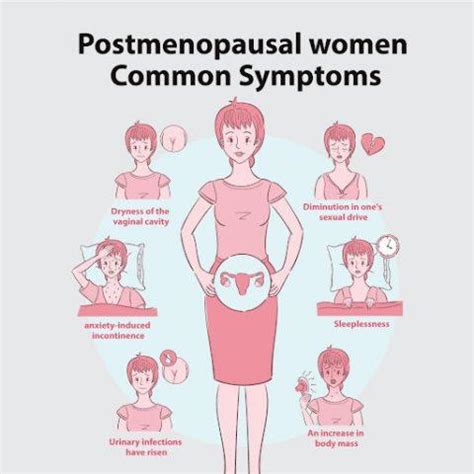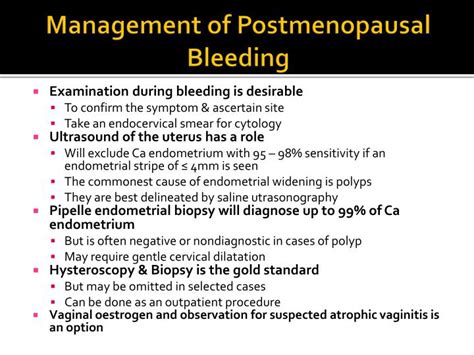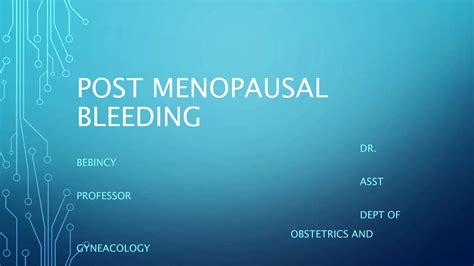Intro
Discover 5 essential tips for managing postmenopause bleeding, including natural remedies and lifestyle changes to alleviate vaginal bleeding, spotting, and other symptoms, promoting womens health and wellness after menopause.
Postmenopause bleeding can be a concerning and unexpected experience for women who have gone through menopause. Menopause marks the end of a woman's menstrual cycles, and any bleeding after this point can be alarming. However, it's essential to understand that postmenopause bleeding is relatively common and can have various causes, some of which may require medical attention. In this article, we will delve into the world of postmenopause bleeding, exploring its causes, symptoms, and most importantly, providing 5 tips to help manage and understand this condition.
The importance of addressing postmenopause bleeding cannot be overstated. Not only can it cause discomfort and anxiety, but it can also be a sign of an underlying health issue that needs to be addressed. Women who experience postmenopause bleeding should seek medical advice to determine the cause and appropriate treatment. It's also crucial to understand that postmenopause bleeding is not just a physical issue but can also have emotional and psychological implications. By understanding the causes and management strategies, women can better navigate this aspect of their health and well-being.
Understanding postmenopause bleeding begins with recognizing the changes that occur in a woman's body after menopause. Menopause is a natural biological process that occurs in women, typically between the ages of 45 and 55, where the ovaries stop producing eggs, and hormone levels decrease. After menopause, the body undergoes several changes, including a significant decrease in estrogen levels, which can affect the uterus and lead to various symptoms, including bleeding. However, any bleeding after menopause is considered abnormal and should be evaluated by a healthcare provider to rule out any serious conditions.
What is Postmenopause Bleeding?

Causes of Postmenopause Bleeding
The causes of postmenopause bleeding can be divided into several categories, including hormonal changes, structural changes in the uterus, and other medical conditions. Hormonal changes, especially the decrease in estrogen levels, can lead to thinning of the uterine lining, which may cause bleeding. Structural changes, such as polyps or fibroids, can also cause bleeding. Other medical conditions, including cancer, infections, or bleeding disorders, can also lead to postmenopause bleeding. Understanding the cause of the bleeding is essential for determining the best course of treatment.5 Tips for Managing Postmenopause Bleeding

-
Seek Medical Attention: The first and most crucial step in managing postmenopause bleeding is to seek medical attention. A healthcare provider can evaluate the cause of the bleeding and recommend appropriate treatment. This may involve a physical exam, ultrasound, or biopsy to determine the cause of the bleeding.
-
Maintain a Healthy Lifestyle: Maintaining a healthy lifestyle can help reduce the risk of postmenopause bleeding. This includes eating a balanced diet, exercising regularly, and avoiding smoking and excessive alcohol consumption. A healthy lifestyle can also help manage symptoms of menopause and reduce the risk of other health conditions.
-
Consider Hormone Replacement Therapy (HRT): For some women, hormone replacement therapy (HRT) may be recommended to manage postmenopause bleeding. HRT involves taking hormones, usually estrogen and progesterone, to replace the hormones the body is no longer producing. However, HRT is not suitable for all women and should be discussed with a healthcare provider to weigh the benefits and risks.
-
Practice Good Vaginal Health: Practicing good vaginal health can help reduce the risk of infections and other conditions that may cause postmenopause bleeding. This includes keeping the vaginal area clean, avoiding harsh soaps or douching, and wearing breathable clothing.
-
Stay Informed and Engaged: Finally, staying informed and engaged with one's health is crucial for managing postmenopause bleeding. This includes keeping track of any bleeding, including the date, amount, and any accompanying symptoms, and discussing any concerns or questions with a healthcare provider. Staying informed can also help women make informed decisions about their health and well-being.
Importance of Early Detection
Early detection and treatment of postmenopause bleeding are crucial for preventing complications and ensuring the best possible outcomes. Women who experience postmenopause bleeding should not delay seeking medical attention, as prompt evaluation and treatment can make a significant difference in managing the condition and preventing more serious health issues.Treatment Options for Postmenopause Bleeding

Lifestyle Changes to Manage Symptoms
In addition to medical treatment, lifestyle changes can help manage symptoms of postmenopause bleeding. This includes maintaining a healthy weight, exercising regularly, and practicing stress-reducing techniques such as meditation or yoga. A healthy diet rich in fruits, vegetables, and whole grains can also help manage symptoms and reduce the risk of other health conditions.Conclusion and Next Steps

We invite you to share your thoughts and experiences with postmenopause bleeding in the comments below. Your insights can help others who may be going through similar situations. Additionally, if you found this article informative and helpful, please consider sharing it with your friends and family who may benefit from this information. Together, we can promote awareness and understanding of postmenopause bleeding and support women in managing their health and well-being.
What is the most common cause of postmenopause bleeding?
+The most common cause of postmenopause bleeding is atrophy of the vaginal walls or uterus, which can occur due to the decrease in estrogen levels after menopause.
How is postmenopause bleeding diagnosed?
+Postmenopause bleeding is diagnosed through a combination of physical exam, medical history, and diagnostic tests such as ultrasound or biopsy to determine the cause of the bleeding.
Can postmenopause bleeding be a sign of cancer?
+Yes, postmenopause bleeding can be a sign of cancer, although this is not the most common cause. It's essential to seek medical attention if you experience any bleeding after menopause to rule out any serious conditions.
How can I manage postmenopause bleeding at home?
+Managing postmenopause bleeding at home involves practicing good vaginal health, maintaining a healthy lifestyle, and keeping track of any bleeding or symptoms. However, it's crucial to consult with a healthcare provider for proper evaluation and treatment.
Can hormone replacement therapy (HRT) help manage postmenopause bleeding?
+Yes, hormone replacement therapy (HRT) may be recommended to manage postmenopause bleeding, especially if the bleeding is caused by hormonal changes. However, HRT should be discussed with a healthcare provider to weigh the benefits and risks.
